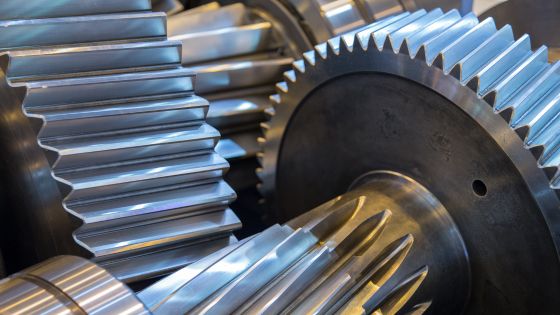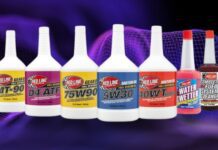Worm gears, known for their unique self-locking capability, stand as a crucial component in diverse industrial machinery and mechanical systems. This inherent self-locking feature offers distinct advantages, making worm gears a preferred choice in applications where safety, stability, and precision are paramount. Let’s explore the remarkable advantages of self-locking worm gears, their functionality, applications, and their pivotal role in various industries.


Understanding Self-Locking in Worm Gears
1. Mechanism of Self-Locking:
- Screw and Gear Arrangement: Worm gears comprise a screw-like worm and a toothed gear (worm wheel) meshed at an angle.
- Sliding Friction: The helical shape of the gear enables high contact ratios, generating substantial frictional forces that resist reverse movement.
2. Self-Locking Principle:
- Prevention of Backdriving: The design prevents the gear (worm wheel) from driving the worm in reverse due to the high frictional forces, ensuring stability and safety.
- One-way Rotation: Worm gears permit only a unidirectional, self-locking rotation of the worm wheel. This ensures precise and stable motion control in machines.
Advantages of Self-Locking Worm Gears
1. Safety:
- The self-locking mechanism prevents reverse movement or backdriving, ensuring safe operation and preventing accidents.
- Ideal for applications requiring high loads and precise positioning, such as lifting systems, conveyor belts, and robotic arms.
2. Stability:
- The high contact ratios between the gear teeth offer exceptional stability against vibrations and external forces, making them ideal for heavy-duty machinery and industrial equipment.
- Their self-locking feature makes them highly resistant to shock loads, preventing unexpected movements and ensuring precise control.
3. Efficiency:
- Worm and worm gears have a higher degree of contact compared to other gear types, resulting in reduced wear and energy losses during power transmission, making them highly efficient.
- The self-locking feature eliminates the need for additional braking systems, reducing costs and increasing overall efficiency.
Advantages of Self-Locking Worm Gears
1. Safety and Stability:
- Braking Effect: Self-locking prevents unwanted reverse motion, offering inherent braking and stability in applications like lifts, cranes, or hoists.
- Load Holding Capability: Ideal for applications requiring secure holding of heavy loads without the need for additional braking mechanisms.
2. Mechanical Advantage:
- High Gear Ratios: Worm gears offer high gear reduction ratios in a compact design, enabling torque multiplication in a smaller footprint.
- Efficiency in Power Transmission: Efficient power transfer due to minimal sliding contact and engagement of gear teeth.
3. Versatility and Precision:
- Variable Speed Applications: Suitable for applications requiring precise speed control due to their ability to maintain set positions without slipping.
- Limited Backlash: Low backlash ensures accurate positioning and minimal play between gear teeth.
Applications and Industry Utilization
1. Lifts, Cranes, and Hoists:
- Elevated Load Holding: Worm gears provide secure holding and controlled movement in lifting equipment and material handling systems.
- Safety Critical Operations: Crucial in applications where safety is paramount, preventing accidental descent or movement.
2. Automotive and Steering Systems:
- Steering Mechanisms: Utilized in steering systems due to their self-locking nature, ensuring vehicle stability and preventing drift.
3. Valve Actuation and Positioning:
- Controlled Flow Management: Precise positioning of valves in industrial applications, offering accurate flow control and throttling.
4. Industrial Machinery and Robotics:
- Precision Positioning: Used in robotic arms and machinery requiring precise movements and stability during operations.
Considerations and Limitations
1. Efficiency and Heat Generation:
- Efficiency Consideration: Higher frictional forces can lead to increased heat generation, impacting overall efficiency.
- Lubrication and Cooling: Proper lubrication and cooling mechanisms essential for minimizing wear and managing heat buildup.
2. Backlash and Efficiency Trade-offs:
- Backlash Challenges: While low, some backlash exists, impacting precision in certain applications.
- Efficiency vs. Locking Force: Balancing efficiency and locking force crucial in optimizing worm gear performance.
Innovations and Future Trends
1. Material Advancements:
- High-Performance Materials: Development of materials offering enhanced wear resistance and reduced friction for improved efficiency.
2. Smart Lubrication and Cooling Systems:
- Advanced Lubricants: Innovations in lubricants and cooling systems to mitigate frictional heat and improve efficiency.
The self-locking feature inherent in worm gears underscores their significance in applications requiring stability, safety, and precise control. Their ability to securely hold loads, prevent reverse motion, and ensure controlled movements has cemented their place as indispensable components in various industrial and mechanical systems.
As advancements in materials, lubrication technologies, and design optimization continue to evolve, self-locking worm gears are poised to witness further refinements, ensuring enhanced efficiency, precision, and reliability in a wide array of industrial applications, ushering in a future where stability and precision converge seamlessly.


























